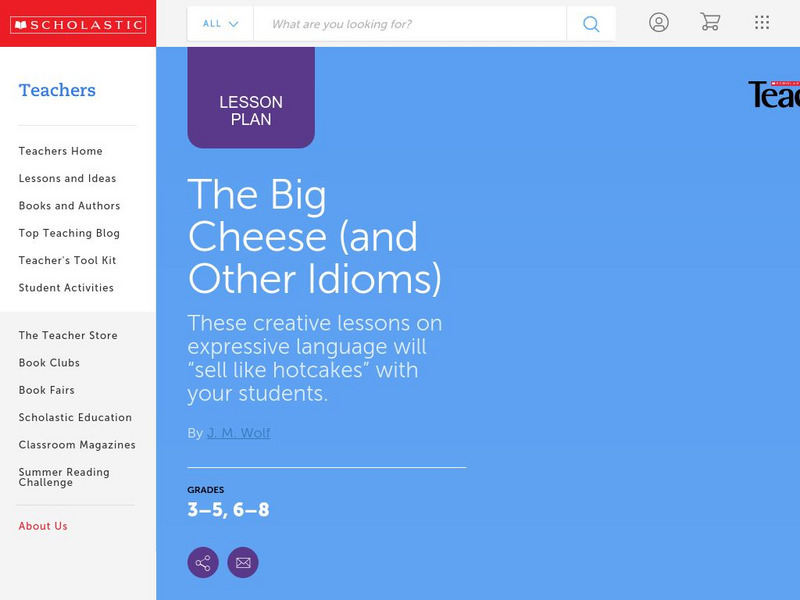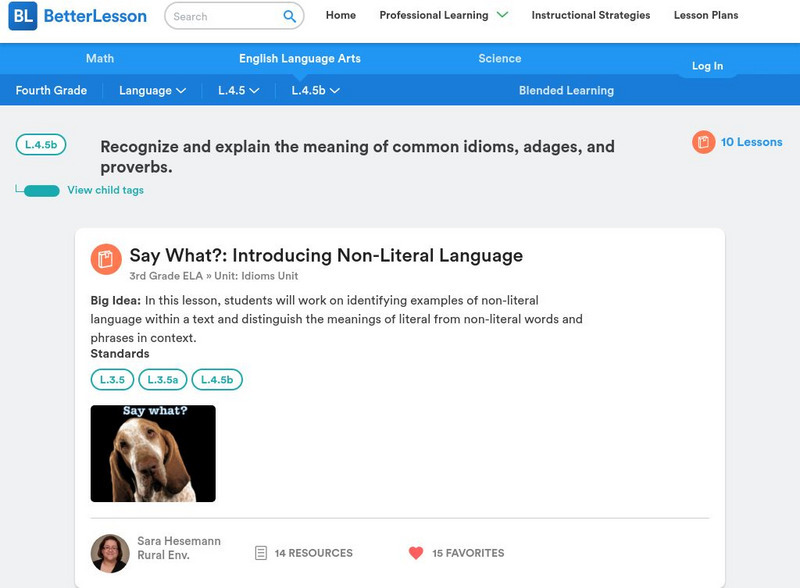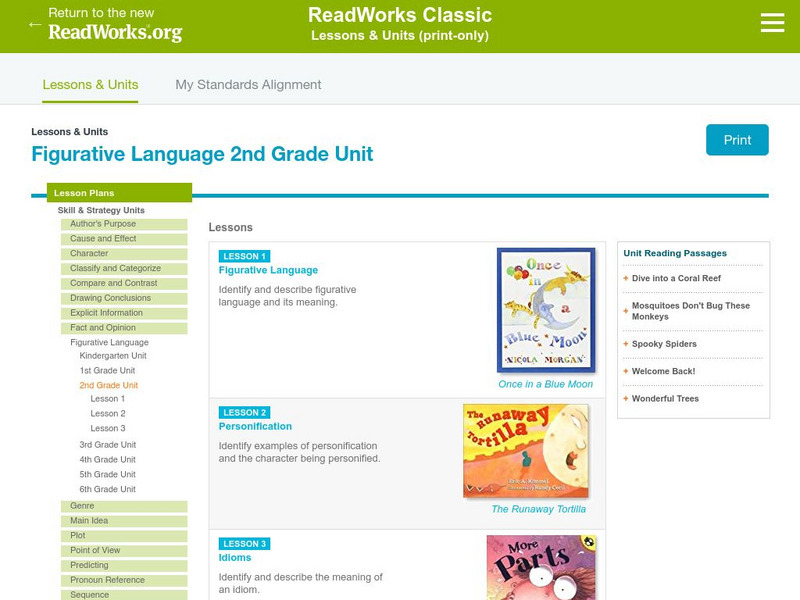Hi, what do you want to do?
New York State Education Department
TASC Transition Curriculum: Workshop 4
Why is it important to use precise language? Participants explore this question in the fourth activity in a series of 15 on effective instruction. Perfect for all content areas, the activity promotes appropriate language choice through...
Scholastic
Scholastic: The Big Cheese and Other Idioms
Find out more about idioms through this informative resource. This site provides activities and ideas revolving around sharpening your knowledge of idioms.
Broward Education Foundation
Broward Education Foundation: Using Idioms Is a Piece of Cake [Pdf]
Teaching about idioms can be great fun. Why are idioms important? Idioms are important so that students can understand what everyone is saying! Idioms are a part of the figurative language. Using the Literal language (as in saying things...
Better Lesson
Better Lesson: L.4.5b: Recognize Meanings of Idioms, Adages, Proverbs
Links to 10 lessons and activities that build student skills in standard L.4.5b: Recognize and explain the meaning of common idioms, adages, and proverbs.
Alabama Learning Exchange
Alex: What Are Idioms?
After listening to More Parts by Tedd Arnold read aloud, intermediate school students distinguish between literal and figurative meaning by using a graphic organizer, playing an online game, and incorporating an idiom into their writing.
Read Works
Read Works: 2nd Grade Lesson: Idioms
[Free Registration/Login Required] In this lesson, students use the book More Parts by Tedd Arnold to learn to identify and understand the use of idiom in a fiction text. Lesson includes direct teaching, guided practice, and independent...
Teachnology
Teachnology: Lesson Plan: Understanding Idioms
This lesson focuses on idioms including illustrating the literal meanings and explaining the figurative meanings.
Alabama Learning Exchange
Alex: In Search of Rhyme and Reason
Students in sixth, seventh, or eighth grade language arts class will read The Phantom Tollbooth by Norton Juster. Discussions and activities will focus on idioms as they are used in the English language.
Read Works
Read Works: Fourth Grade: Three Lesson Unit: Figurative Language
[Free Registration/Login Required] A lesson plan, based on In a Pickle and Other Funny Idioms by Marvin Terba, in which students learn how understand idioms and use them to explain the plot and to make predictions. With free login, users...
Read Works
Read Works: Grade 2: Three Lesson Unit: Figurative Language
[Free Registration/Login Required] A series of three lesson plans designed to teach students to identify and explain the meaning of figurative language including personification and idiom. Lessons are based on the books Once in a Blue...
Everything ESL
Everything Esl: Hats Off to You!
In the lesson, "Hats Off to You", younger students will learn about world occupations and costumes. Older students will be able to learn idioms about hats. The site features downloads and resources.
Broward Education Foundation
Broward Education Foundation: The Arts and Crafts of Storytelling [Pdf]
In the Arts and Crafts of Storytelling, American folk heroes come to life, help students expand their vocabulary and increase knowledge of figurative language. Students identify figurative language like similes, idioms and hyperboles....
South Carolina Educational Television
Know It All: Using Figurative Language to Shape Meaning and Style
The students will be able to identify different types of figurative language in a story and explain how the author uses figurative language to shape the meaning and style of the story.
Other popular searches
- Common English Idioms
- Common Idioms
- Animal Idioms
- Esl Idioms
- Poetry Idioms
- Amelia Bedelia Idioms
- Teaching Idioms
- Idioms Lesson Plans
- Idioms About Friendship
- Food Idioms
- Common Idioms Third Grade
- Free Esl Idioms







![Broward Education Foundation: Using Idioms Is a Piece of Cake [Pdf] Lesson Plan Broward Education Foundation: Using Idioms Is a Piece of Cake [Pdf] Lesson Plan](https://static.lp.lexp.cloud/images/attachment_defaults/resource/large/FPO-knovation.png)







